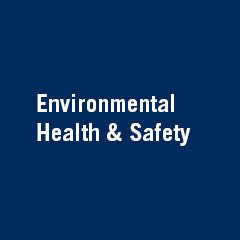Title Page
-
Principle Investigator Name
-
Rooms and Type
Room
-
Room Number
-
Lab Type
-
Conducted on
-
Prepared by
-
Location
Permit Admin (Test Blurbs and Links)
Personnel List
-
List up to date
-
Any time there is a change in personnel, our office must be notified so that your biosafety permit can be kept up to date. This applies to staff, graduate students, project students, summer students, volunteers and any one else who will be working in your lab. To attach or remove personnel, simply send an email to ehs.biosafety@utoronto.ca with their name and staff/student number (this includes summer/project students etc.). It is important to note that this should be done at any time personnel join and leave your laboratory and not only when the permit renewal itself is prepared
-
Please send an email to following address
http://ehs.biosafety@utoronto.ca -
MOUs for all personnel updated with SOPs, equipment
-
Please note that it is important to document specific in-house training or equipment training and update the MOU as needed.
It is the PI's responsibility to have on file signed MOU forms for everyone listed on their permit. These forms are to be kept for at least 3 years from the last date of their appointment and in perpetuity if work with lentivirus is undertaken.
I also wish to remind you of the importance of documenting in house training conducted in your lab. If you are to adopt new SOPs (such as lentiviral work, handling liquid nitrogen, autoclaving etc.) that involve new pieces of equipment or SOPs which would require extra PPE (for example a face shield or an N95 mask/respirator) please update your MOUs, training record and Biosafety Manual accordingly.
Documentation of safety training for equipment or procedures that have risks is important in case an accident were to occur, as proof of training may be asked for by external investigators. The documentation of training done in the lab can be accomplished by adding the information to the biosafety MOU or simply signing and dating a form of your own (for labs with many personnel, many SOPs and equipment, a spreadsheet outlining all the SOPs and equipment along with columns for date, person training, person being trained, signatures may work best). -
The biosafety MOU can be found here
https://ehs.utoronto.ca/wp-content/uploads/2016/10/MOU-October-2016-reg.pd
Training
-
Training upto date
-
All courses below are offered online.
Personnel attached to a biosafety permit must take the Laboratory Biosafety course (EHS601). The Biosafety Refresher course (EHS602) must be taken on an annual basis starting one year after taking the full biosafety course (EHS601).
Personnel that work in a lab must take a WHMIS course. Those that have not previously taken a WHMIS course should take the WHMIS and Lab safety course (EHS101). Those who have taken a WHMIS course at UofT prior to 2015 (when changes to WHMIS occurred), should take the WHMIS Refresher course (EHS112). The refresher course EHS112 will have to be taken every 3 years.
Personnel working with human primary tissue/cells/fluids need to take the Blood Bourne Pathogens course, EHS603.
Any personnel requiring a respirator must take the Respiratory Protection course (EHS532): this includes an on-line portion and an in-person fit test every 2 years.
Personnel may check their training history by logging into the EHS portal here: https://ehs.utoronto.ca/training/my-ehs-training/
Please direct training related questions to ehs.courses@utoronto.ca -
The training matrix for lab personnel may be found here
https://ehs.utoronto.ca/training/laboratory-personnel/ -
Training needs assessment, documentation
-
a) ***NEW: During the last PHAC inspection (February 2018), the regulators indicated that they expect level 2 labs to have annual in house emergency response reviews and that these reviews and your personnel’s attendance should be documented.
We are suggesting that labs go over their emergency response plans (spill procedures, ocular exposure, spill on body, fire, etc.) at one of their regular lab meetings and take attendance. The attendance sheet could then be kept as documentation. This would have to be done at least annually.
b) In-house training needs (for equipment and SOPs) must be assessed on a regular basis and this training needs to be provided as needed and documented.
Lab Specific Biosafety Manual (Test Multiple Rooms)
-
Room Inspected
Room
Room Number
-
Number
Standard Operating Procedures (SOP) present
-
Biologicals on permit, Liq N2, etc
-
Autoclave
Other
-
MSDS Available
-
PSDS Available
-
Waste Procedures: RG1 and RG2
-
liquid and solid
-
Emergency response procedures
-
RG2 Inventory
Physical Deficiencies
Building
-
Is the building good
Chairs
-
Ergonomics














